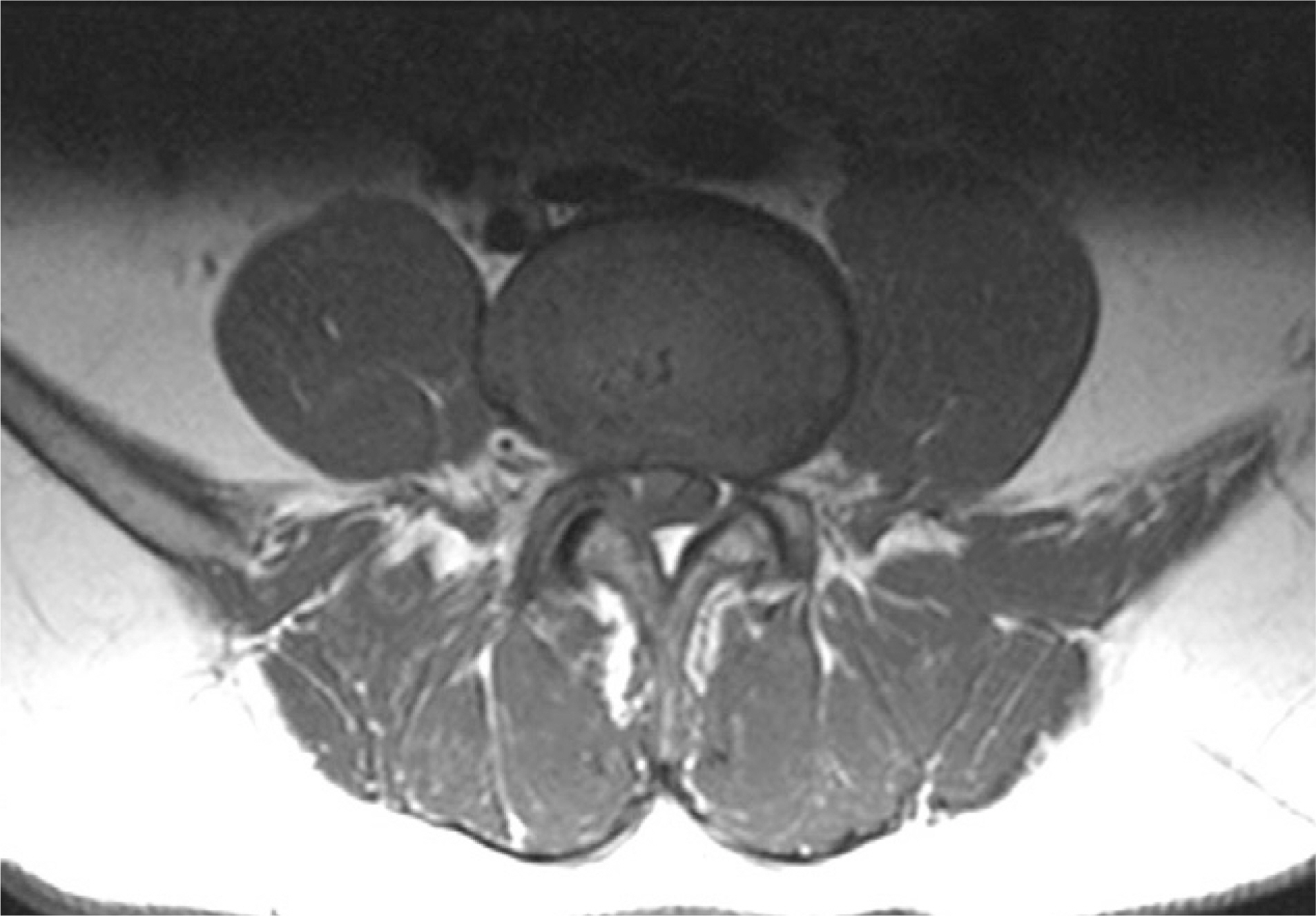J Korean Soc Spine Surg.
2009 Jun;16(2):134-137. 10.4184/jkss.2009.16.2.134.
Cauda Equina Syndrome due to Epidural Hematoma After Lumbar Epidural Block : A Case Report
- Affiliations
-
- 1Department of Orthopedic Surgery, Masan Samsung Hospital, Sungkyunkwan University School of Medicine, Masan, Korea. someday206@yahoo.co.kr
- KMID: 2209608
- DOI: http://doi.org/10.4184/jkss.2009.16.2.134
Abstract
- Cauda equina syndrome after epidural block is a rare complication, but it requires emergency surgery when it is diagnosed. A 65-year-old man who underwent epidural block at a local clinic was admitted with right lower leg weakness and decreased leg sensation, severe lower radiating pain, dysuria and decreasing sensation in the perianal region. Magnetic resonance image showed protruded disc material between L4-L5 and a hematoma that occupied most of the spinal canal and this was compressing the spinal cord. These findings were diagnostic for cauda equina syndrome after epidural block and so laminectomy, excision of the herniated disc and removal of the hematoma were done. At 6 months follow-up, the neurologic symptoms were resolved except for the dorsiflextion of the ankle and the big toe. We report here on a case of cauda equina syndrome as a rare complication after epidural anesthesia.
MeSH Terms
Figure
Reference
-
1). Waldman SD. Cervial epidural nerve block. Interventional Pain Management. 2nd ed.Waldman SD, editor. Philadelphia: WB Saunders company;pp. p. 373–381. 2001.2). Bent U, Gniffke S, Reinbold WD. An epidural hematoma following single shot epidural anesthesia, Anaesthesist. 1994; 43:245–248.3). Dickman CA, Shedd SA, Spetzler RF, Shetter AG, Sonntag VK. Spinal epidural hematoma associated with epidural anesthesia: complication of systemic heparinization in patient receiving peripheral thrombolytic therapy. Anesthesiology. 1990; 72:947–950.4). Skilton RW, Justice W. Epidural hematoma following anticoagulant treatment in a patient with an indwelling epidural catheter, Anaesthesia. 1998; 53:691–695.5). Park BM, Won YY. Clinical observation on 8 cases of cauda equina syndrome. J of Korean orthop Assoc. 1988; 23:184–192.
Article6). Ayten B, Sacit G. Cauda equina syndrome after epidural steroid injection: A case report. J. of Manipulative and Physiological Therapeutics. 2006; 29:492. .e1-492.e3.7). Kostuik JP, Harrington L, Alexander D, Rand W, Evans D. Cauda equina syndrome and lumbar disc herniation. J. Bone joint Surgery Am. 1986; 68:386–391.
- Full Text Links
- Actions
-
Cited
- CITED
-
- Close
- Share
- Similar articles
-
- Lumbar Spinal Epidural Abscess Combined with Cauda Equina Syndrome: A Case Report
- Thoracolumbar Epidural Hematoma Complicated by Cauda Equina Syndrome : Complication of Systemic Heparinization Following Epidural Anesthesia: A case report
- Cauda Equina Syndrome Following Volumetric Caudal Epidural Steroid Injection in a Herniated Interverterbral Disc Patient: A case report
- Pediatric Lumbar Epidural Abscess Combined with Cauda Equina Syndrome: Case Report
- Posterior Epidural Migration of a Sequestrated Intervertebral lumbar Disc with Cauda Equina Syndrome: Two Cases Report



